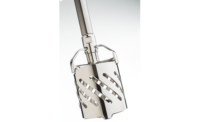Any trip to the supermarket reveals the latest trend in flexible packaging: stand-up pouches. Aisles are swelling with SUPs as big brands like M&M/Mars, Hershey, Kellogg’s and General Mills switch from lay-flat bags or bag-in-box to stand-up pouches.
Aside from the stronger shelf presence achieved by stand-up pouches’ ability to … well, stand up, SUPs offer other key benefits including recloseability and streamlined production. Meanwhile, more eco-friendly materials are combining with flexible packaging’s inherent light weight and materials minimization for increased sustainability. Indeed, we’ve come a long way since the Doypack of Capri Sun fame debuted in the 1960s.
Given the newfound interest in SUPs, an emerging challenge is determining precisely what packaging machinery can successfully produce them. Initially, SUPs were primarily manufactured on horizontal form fill seal machines, (HFFS). Manufacturing challenges may arise when trying to run modern SUPs in facilities whose packaging lines are designed with space for traditional vertical form fill seal baggers (VFFS).
And as SUPs have become more sophisticated, this equipment issue has become more compounded. Food companies want to get in on the stand-up pouch craze, yes, but don’t want to buy brand new horizontal FFS machines to do so. Simply put, the innovation might not be worth the investment.
But thanks to technological advances, it is possible to produce horizontally made SUPs on vertical FFS machines. Here are factors to help food companies determine whether their existing VFFS equipment can stand up to stand-up pouches.
1. Consider the Constraints Each Machine Type Places on Film
While an HFFS machine takes a roll of film and runs it over a plow horizontally, a VFFS machine unwinds the film roll in an upward direction and then pulls it over a color changing directions 180 degrees. Thus, more rigid films (like paper/poly/foil/poly) are often difficult to run on a VFFS. Additionally, films run on a VFFS must have a lower coefficient of friction on the inside of the film than the outside to be properly transported over the forming collar.
2. Differing Seal Processes Can Affect the Final Product
In an HFFS machine, the film is folded flat, has just two dimensions, and can be run over a series of seal stations; each of these attributes allows for extra conditioning of the seals. Conversely, in the VFFS process seals are produced at the same time as filling and sealing, so further preheating, heating and cooling is limited to a single cycle timeframe. The net result of these different processes is that the side and bottom seals of SUPs produced via VFFS may look slightly less refined.
3. Consider Fill Volume
How full is the finished pouch? SUPs produced on vertical FFS machines generally cannot be filled at as high a volume as those produced via horizontal FFS equipment; on a VFFS, the bag is formed and sealed simultaneously with its filling through the side. Thus, the pouch is not fully open and the package fill volume must account for this. When a recloseable zipper is involved, VFFS requires a closed zipper during the filling-sealing process, which limits the available volume for product filling. So when developing a new SUP to be run on a VFFS machine, account for this slightly reduced fill volume.
Meeting these prerequisites can be well worth it: VFFS machines have smaller footprints and broader bag style flexibility. It is not uncommon that pillow bags, gusseted bags, gusseted flat-bottom bags and vertically made SUPs all run on the same VFFS machine, with minimal changeover between them. Considering this, manufacturers can maintain a streamlined production process with vertical FFS machinery to produce SUPs, no additional machinery required.




